[ad_1]
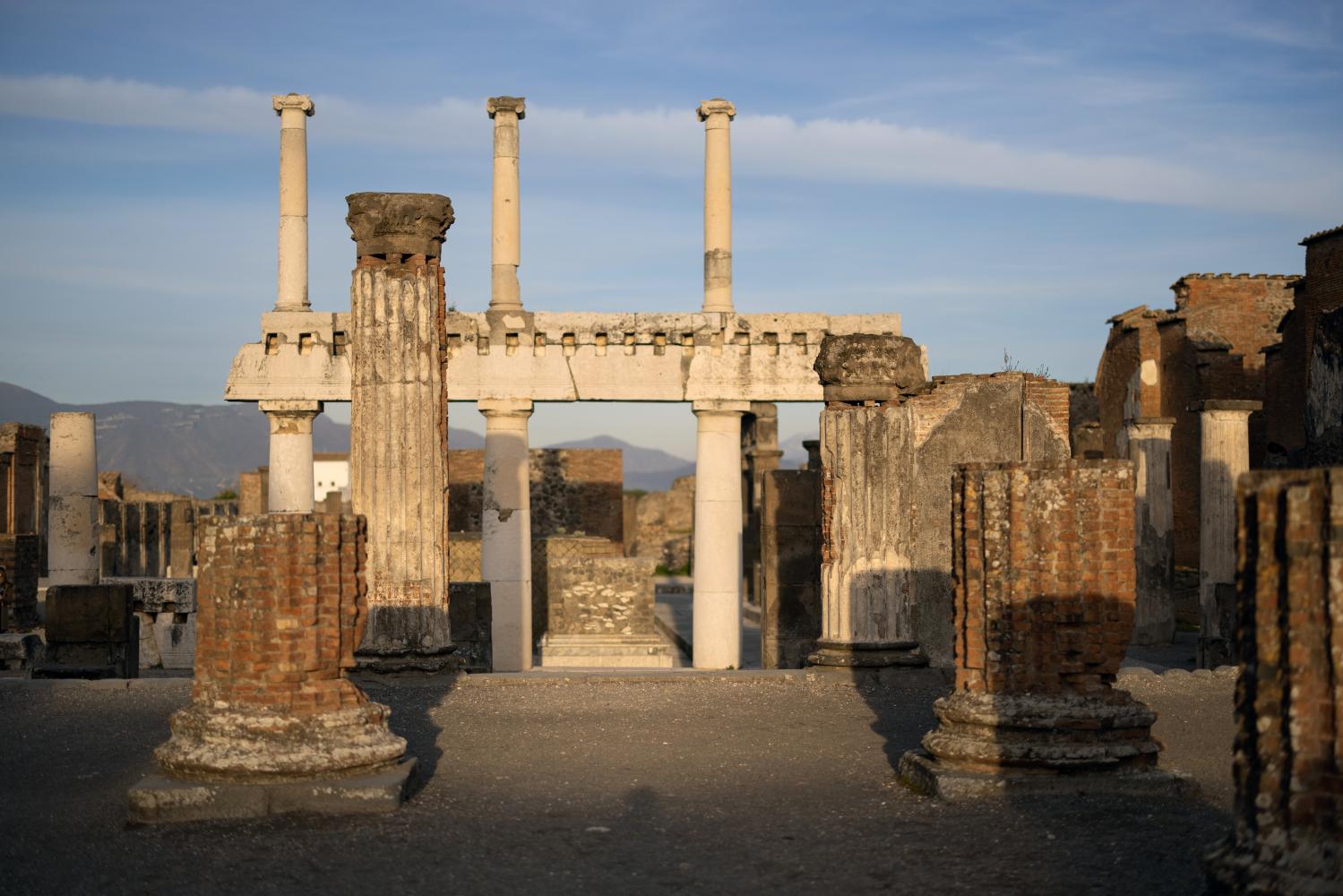
On a new morning at the necropolis of Porta Sarno, just outside the house Pompeii’s jap edge, Mattia Buondonno gingerly lifted a protective tarp masking a tomb identified very last yr.
According to the inscription on the tomb’s pediment, its occupant was a freed slave named Marcus Venerius Secundio, who grew to become wealthy and “organised performances in Greek and Latin that lasted four times”, Mr Buondonno, a Pompeii tour guideline, examine, translating from the Latin.

People marvel at the Home of Sirico at Pompeii. ROBERTO SALOMONE
Inside of the tomb, believed to day to just decades right before the eruption of Mount Vesuvius that smothered Pompeii in Ad 79, archaeologists experienced uncovered 1 of the greatest preserved skeletons ever found. “It really is odd for that time. Normally grown ups ended up cremated,” Mr Buondonno mentioned.
But the tomb was vital for other explanations, way too.
“Modern finds like this exhibit us new perception into the lessen courses of Pompeii,” explained Luana Toniolo, a previous Pompeii employees archaeologist, who excavated the web page. In individual, an epigraph with Secundio’s condensed biography — which also claims he was a custodian at the Temple of Venus and educated for the priesthood in a cult — shed light on some occupations that freed slaves “could aspire to”, she said.
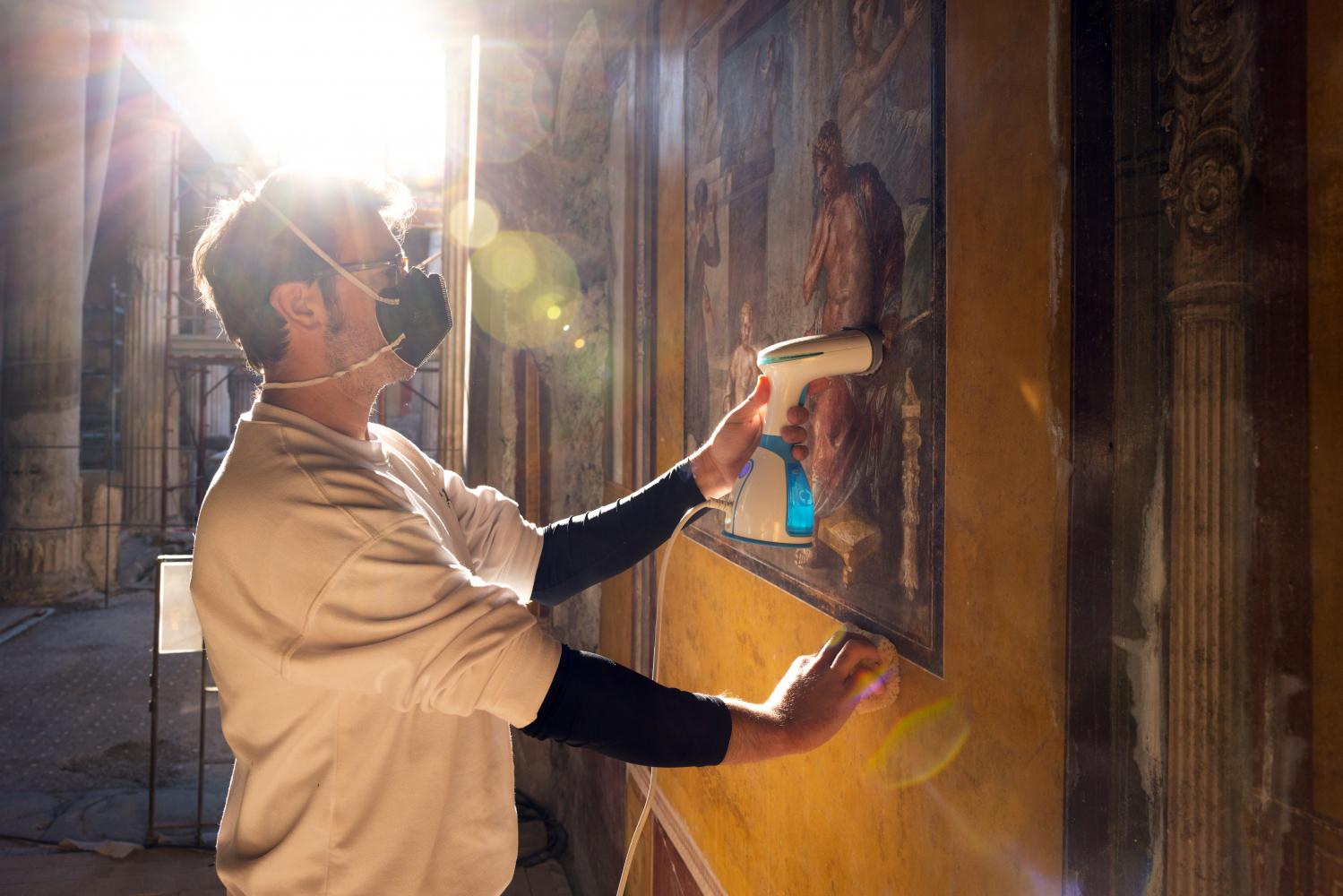
Ignazio Carlo Raucci, a restorer, steam cleans one particular of the frescoes within the Household of the Vettii in Pompeii. ROBERTO SALOMONE
For archaeologists, the tomb inscription was also vital as affirmation of a hitherto unverified concept that performances in Pompeii had been presented in Greek, the language most utilized in the eastern Mediterranean. It still wasn’t apparent whether or not those people ended up musical or theatrical, but it was evidence that Pompeii had been a cosmopolitan metropolis.

Frescoes inside of the Villa of Mysteries, a single of the best preserved homes in Pompeii. ROBERTO SALOMONE
“We know people today from during the Mediterranean lived in Pompeii,” Gabriel Zuchtriegel, 40, the site’s director, explained in a video clip about the obtain. It was an open, multi-ethnic modern society, he included.
It applied to be that people thronged to the ancient ruins primarily to see dazzling frescoes in grandiose abodes, captivated by the tragedy of an historical civilisation that had no chance of survival towards the tonnes of ash, gas and rocks that snuffed out daily life in the town. But Mr Zuchtriegel, the Italo German archaeologist who took in excess of Pompeii in 2021, is hoping that beneath his watch, site visitors will get to know the historic metropolis by a broader lens, checking out its complex social stratification.
“Quite a few of the questions we are right now addressing are motivated by other fields emerging listed here, these kinds of as gender experiments and submit-colonial studies,” he said. “We really should not forget that all the wealth and artwork functions that we see in Pompeii are actually dependent on a society where by not only slavery existed, but there was no idea of social welfare.”

A effectively-preserved thermopolium, or ancient snack bar, in Pompeii. ROBERTO SALOMONE
Really hard proof of the grim lifetime that enslaved people today endured emerged final calendar year with the discovery of “the Area of the Slaves” in a villa to the north of Pompeii. The cramped room contained 3 cots (the smallest one very likely for a child), as properly as a chamber pot and clay jugs, suggesting that its inhabitants ended up residing in what was also a storage region. The space had been lit by a little higher window.
“Sometimes you are suddenly really close to this actuality of what in all probability the greater part of inhabitants of Pompeii seasoned,” Mr Zuchtriegel said. “I imagine it was a extremely difficult society.”
There are loads of things nevertheless to cross off on Mr Zuchtriegel’s checklist to deliver a website frozen in the very first century into the 21st.
“We even now require to consider about how to far better incorporate persons with disabilities, youngsters, persons with different cultural backgrounds,” he stated. “It is really not just about the barrier-cost-free entry, it is really also about the language we use and the way we check out to reveal the internet site.”
For some, it is about time that these problems have been eventually out in the open. “In many cases archaeologists can be conservative with the subject areas they address,” Sarah E Bond, an associate professor of history at the University of Iowa, reported in a mobile phone job interview, introducing, “I am psyched to see items starting up to come close to in Pompeii”.
Significantly, there has been a broader shift in scholarly exploration into the ancient globe to investigate beforehand disregarded issues — “matters like sexual assault and rape, or slavery”, Assoc Prof Bond reported. “It truly is just good to now see Italian archaeologists overseeing Pompeii as a museum web-site, embracing vital questions of gender, pressured labour and violence in crucial techniques,” she added.
Significantly of the work carried out in the previous decade arrived less than the aegis of the Terrific Pompeii Task. This US$137 million (4.57 billion baht) exertion, funded by the European Union, started in 2013 to far better preserve the web page, following a making collapsed in 2010, sparking global discussion about the maintenance there.
“The funds was put in, and used very well,” Mr Zuchtriegel reported, lavishing praise on his predecessor, Massimo Osanna, who oversaw the web site when cash was flowing, before he was promoted to oversee all of Italy’s museums. Mr Osanna introduced about “an monumental turnaround,” he stated.
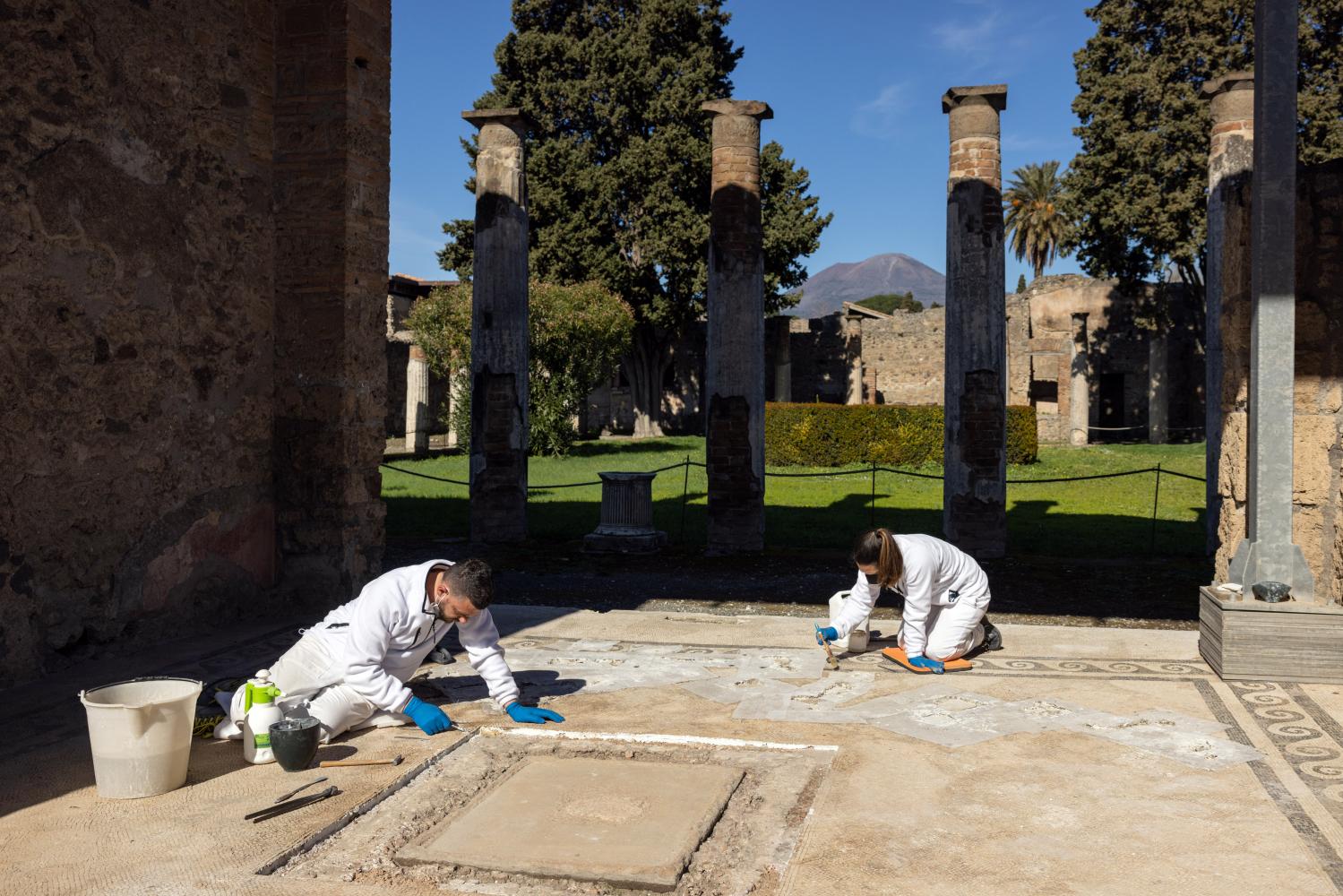
Restorers Aldo Guida, still left, and Valentina Cifali function on the mosaic ground of the Residence of the Faun in Pompeii. ROBERTO SALOMONE
That also incorporated an about-deal with in the way Pompeii communicated, said Assoc Prof Bond, who gave Mr Osanna credit for offering Pompeii a powerful social media presence. For the duration of his tenure, Pompeii generated general public interest by using Instagram and Twitter to announce discoveries, rather than keeping them underneath wraps until eventually they ended up printed in scholarly journals, the outdated way of carrying out things in Italy. “I noticed a entire new era of people today partaking who experienced by no means been to the site of Pompeii, at any time,” she said. “But they noticed it on Instagram and they had been just enthralled.”
Artificial intelligence and robotics are also currently being employed to piece together the ceiling frescoes of the House of the Painters at Do the job, which was wrecked in a Environment War II bombing. (That developing, an historical house, obtained its name because paint pots and brushes had been identified in a person home.) And 3D laser scanning technological innovation was employed to make a design of a horse skeleton unearthed in 1938 that recreated some of its missing sections.
New technologies will also participate in a job in explaining to website visitors an spot being restored on the western edge of the ancient website known as “Insula Occidentalis”, which contains quite a few urban villas crafted on a slope overlooking the Gulf of Naples.
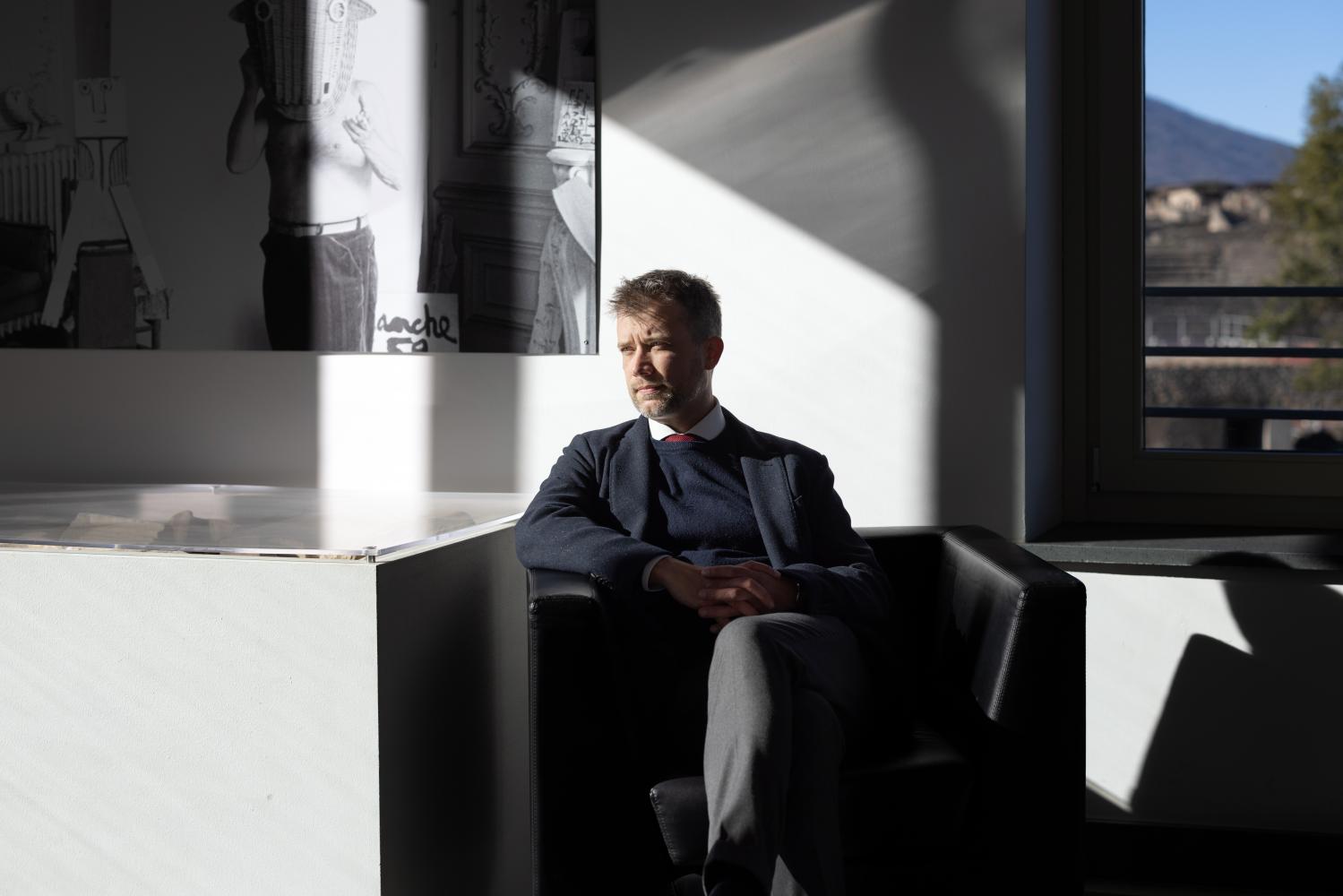
Gabriel Zuchtriegel, the new director of the archaeological web-site in Pompeii, Italy, at his office environment. ROBERTO SALOMONE
Paolo Mighetto, the architect who is overseeing the job, said brainstorming was underway on how greatest to provide the space alive for the public, potentially by making use of holograms, or some type of interactive illumination. “We’re pondering about distinct answers,” he explained. (There is previously a Pompeii app that persons can obtain on their smartphones and get data about buildings by scanning QR codes all through the internet site.)
A person villa in the spot, the so-identified as House of the Library, made available up an especially exciting “treasure upper body” of material, Mr Mighetto claimed. It gives a sweeping sense of some 2,000 years’ well worth of upheavals, such as a significant earthquake in Ad 62 the eruption of Mount Vesuvius Pompeii’s very first excavation in the 18th century, when underground tunnels were being dug beneath the creating and the deformations brought about by Planet War II bombs.
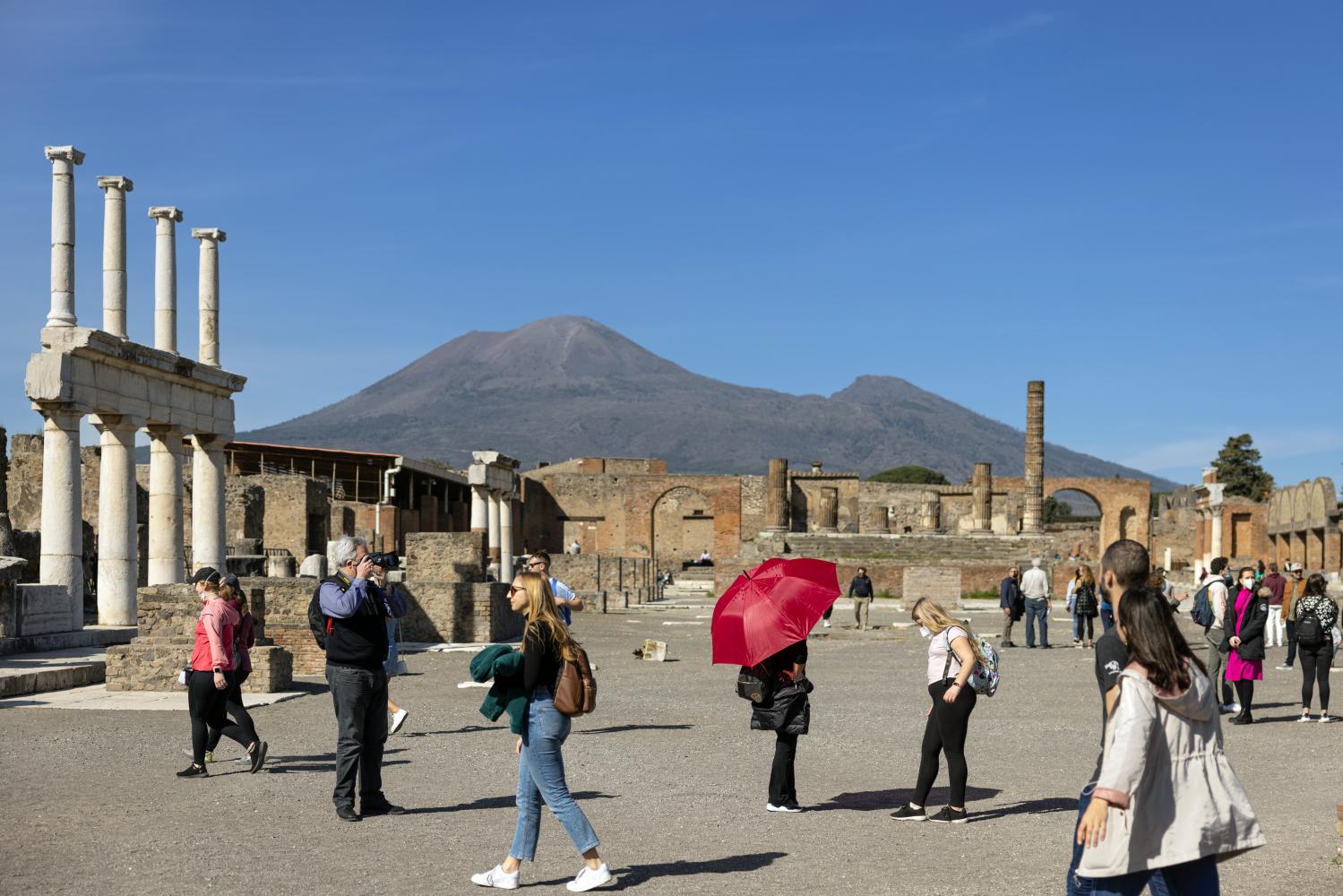
Holidaymakers take a look at Pompeii, Italy. ROBERTO SALOMONE
“We’re looking at traces of a succession of gatherings about time,” stated Mr Mighetto. “Our problem is to make it possible for guests to see the traces of these disastrous activities by the lesions, cracks and deformations of the masonry” so that they could improved “fully grasp the drama of the earlier” applying these new technologies.
In a way, as well, Pompeii has normally been a trendsetting internet site.
“Not only for archaeology, but for restoration tactics and for making archaeology accessible to the general public,” Mr Zuchtriegel claimed. “And which is had a massive impression.”
[ad_2]
Resource link
































